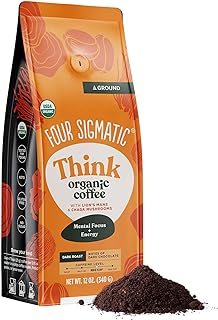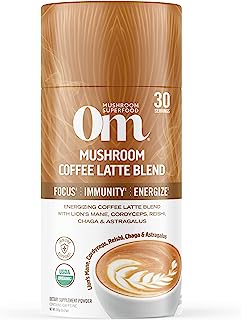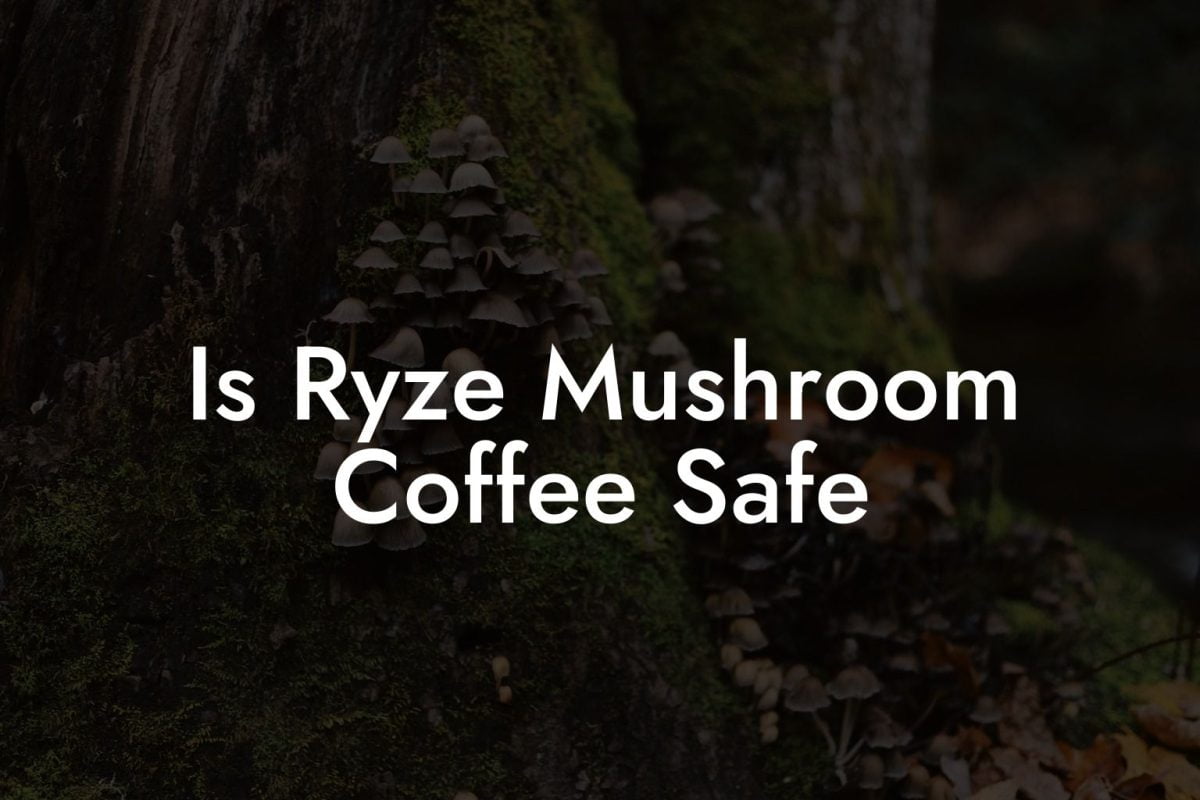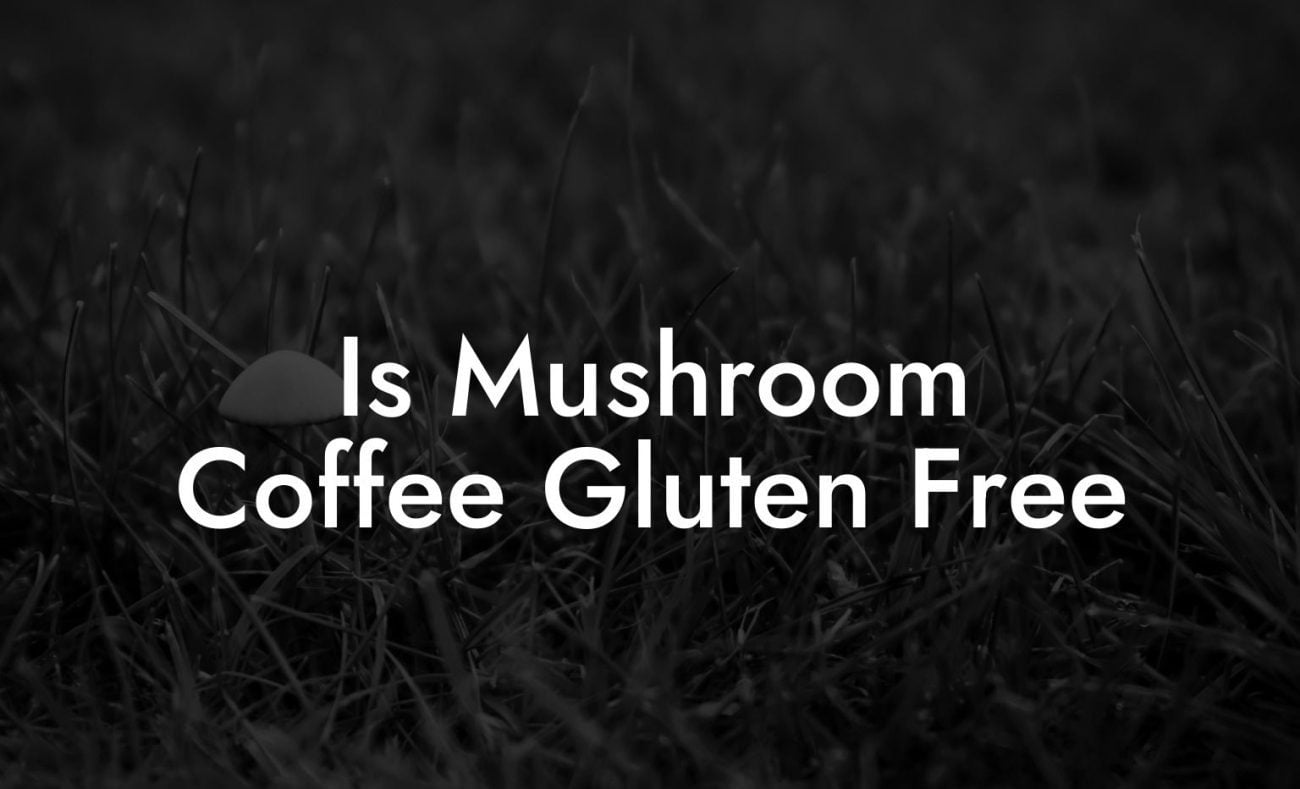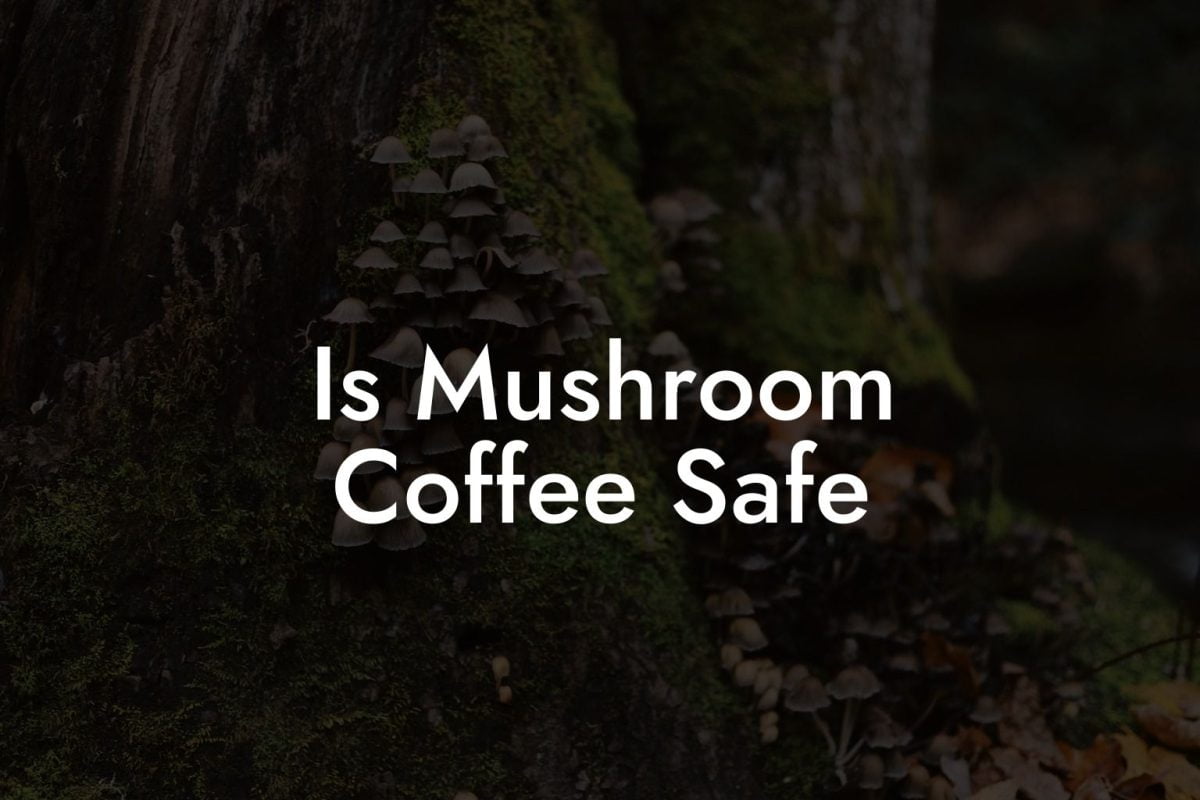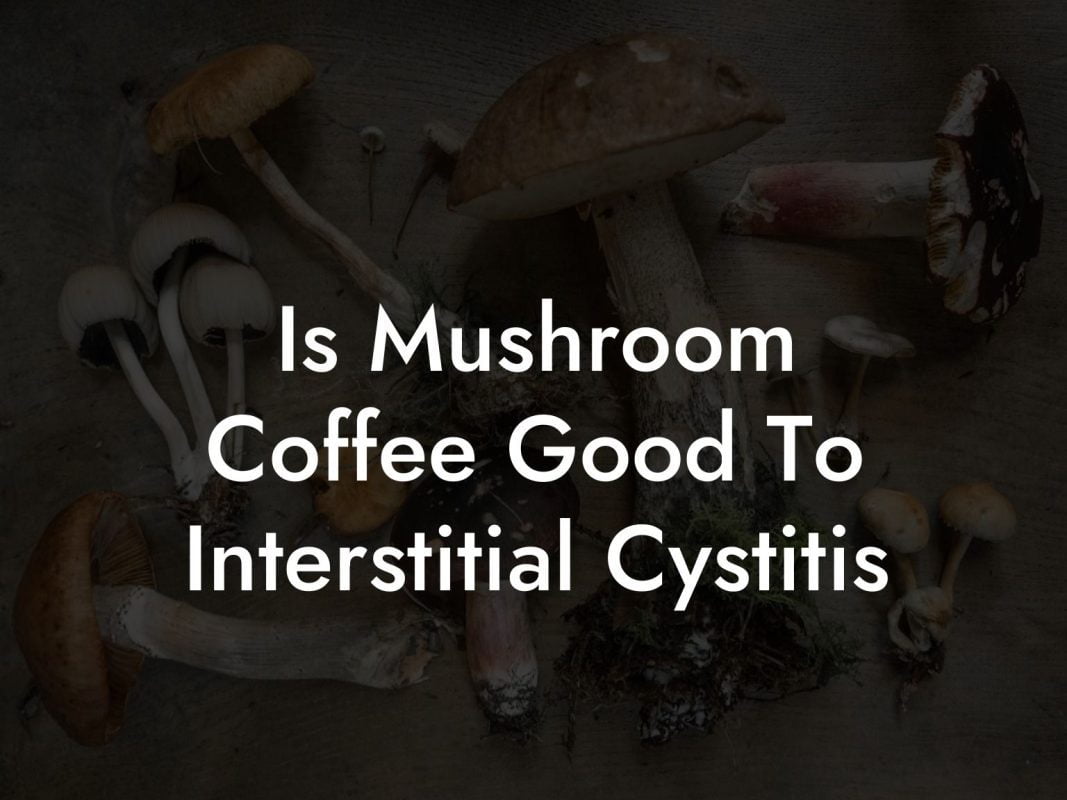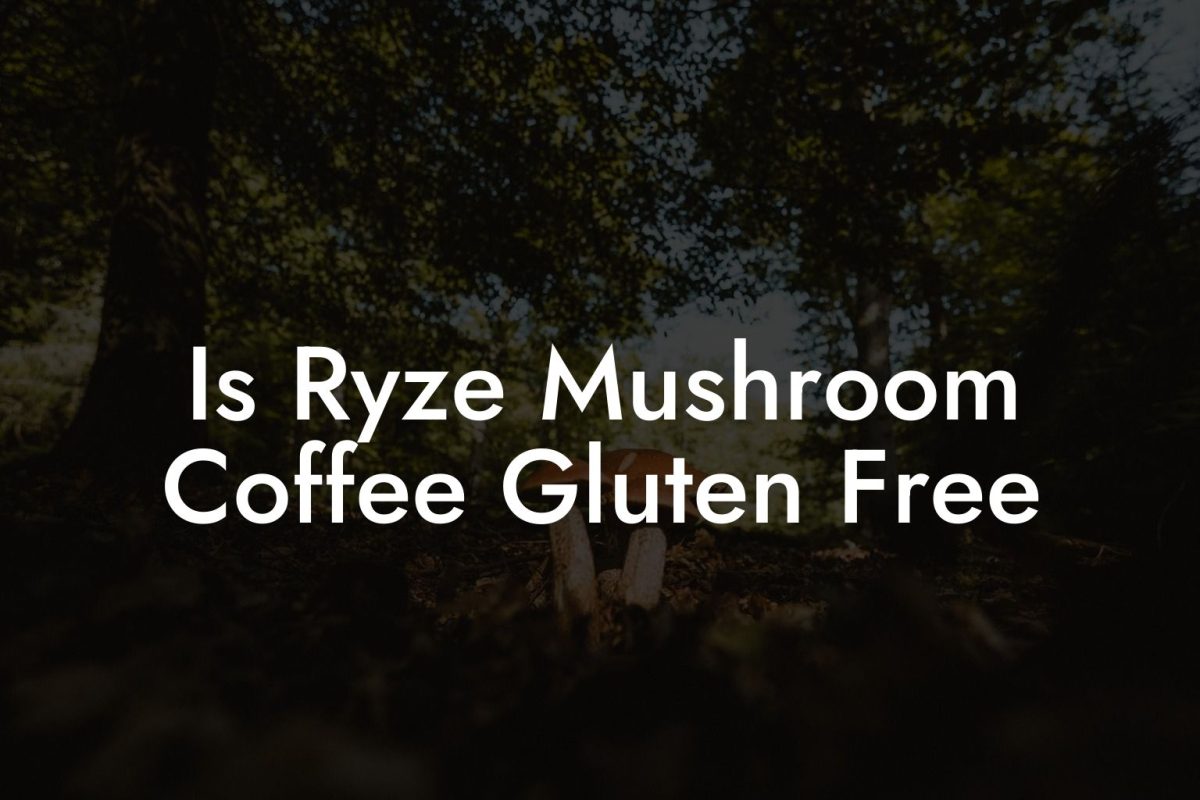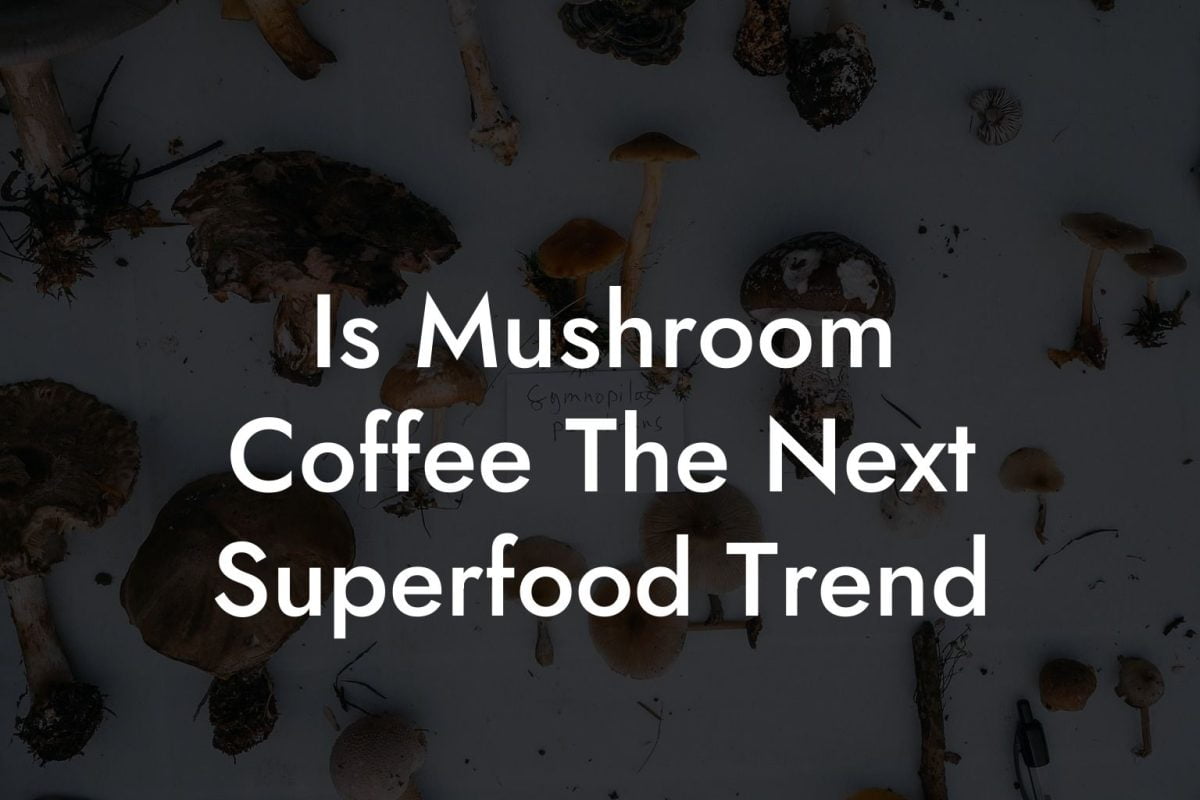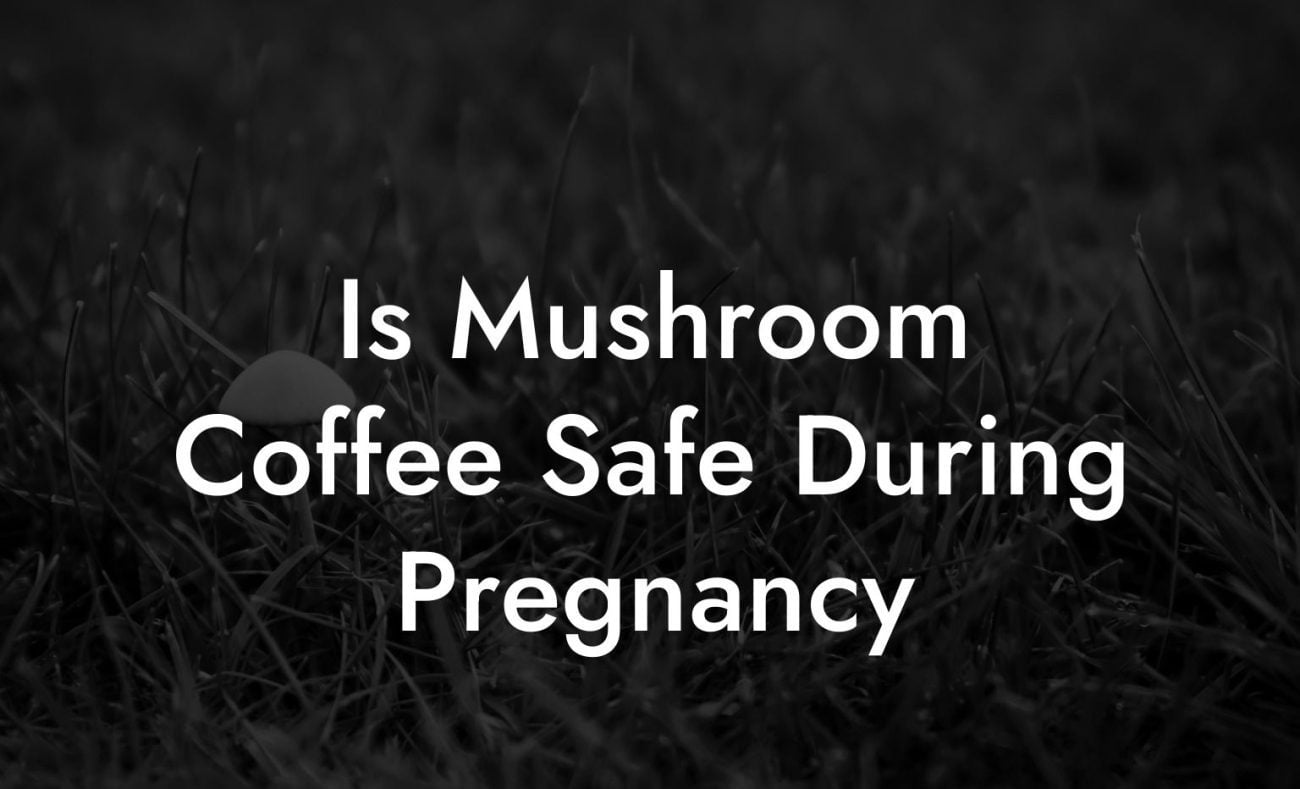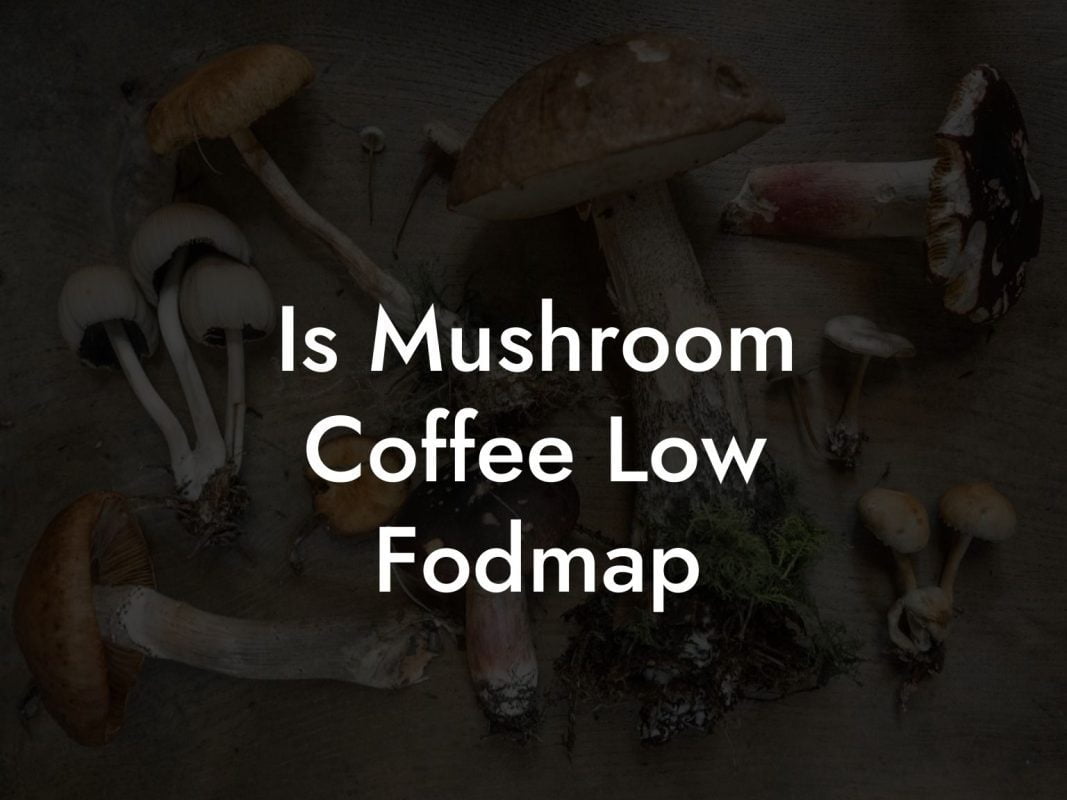Ever thought your morning cup of joe could do more than just kickstart your day? Picture this: your discarded coffee grounds transforming into a lush, fertile substrate, nurturing the delicate mycelial networks that eventually burst forth as gourmet mushrooms. Welcome to the world of “Coffee Grounds For Mushroom Substrate,” where caffeine meets cultivation in the most unexpected yet revolutionary way. Forget boring, chemical-laden growth mediums, this is nature’s recycling at its most creative, quirky, and sustainable. Grab your favorite recycled mug and get ready to dive into a journey of organic alchemy!
Quick Links to Useful Sections
- What Are Coffee Grounds For Mushroom Substrate?
- The Science Behind Coffee Grounds as a Mushroom Substrate
- Why Use Coffee Grounds in Mushroom Cultivation?
- How to Prepare Coffee Grounds for Mushroom Substrate
- Step 1: Collecting Your Coffee Grounds
- Step 2: Drying and Storing the Grounds
- Step 3: Sterilization or Pasteurization (Optional but Recommended)
- Step 4: Combining Coffee Grounds With Other Substrates
- Step 5: Inoculation and Incubation
- The Benefits of Using Coffee Grounds for Mushroom Substrate
- Environmentally Friendly and Sustainable
- Enhanced Mycelial Growth
- Minimizing Contamination Risk
- Cost-Effective and Accessible
- Potential Flavor Enhancements
- Integrating Coffee Grounds With Other Organic Materials
- Mushroom Species That Thrive on Coffee Grounds
- Oyster Mushrooms
- Shiitake Mushrooms
- Lion’s Mane
- Enoki Mushrooms
- DIY Setup: Creating the Ultimate Coffee Ground Mushroom Garden
- Gather Your Materials
- Step-by-Step Assembly
- Overcoming Challenges: Troubleshooting Your Coffee Ground Substrate
- Contamination Concerns
- Improper Moisture Levels
- Temperature Fluctuations
- Pest Intrusions
- Resources and Community Support: Your Next Steps
- Mushroom Coffee: The Trendy Offshoot
- Success Stories: Real-Life Transformations With Coffee Ground Substrates
- The Urban Farmer Who Turned Waste Into Gourmet Gold
- The Eco-Warrior’s Journey to Organic Abundance
- A Culinary Innovator’s Experiment with Flavor
- Integrating Coffee Grounds Into a Holistic Cultivation Approach
- FAQs on Coffee Grounds For Mushroom Substrate
- Your Journey Into Sustainable Fungal Farming Begins Now
What Are Coffee Grounds For Mushroom Substrate?
In simple terms, using coffee grounds for mushroom substrate is a method of repurposing used coffee grounds as a key ingredient in the growing medium for mushrooms. This innovative approach leverages the nutrient-rich, organic properties of coffee grounds to create an ideal environment for mycelium, a fungal network, to flourish. With a potent mix of nitrogen, organic compounds, and a perfect balance of moisture, coffee grounds serve as a powerhouse substrate that mushroom cultivators (both amateur and pro) swear by.
Coffee grounds aren’t just waste, they’re little nuggets of potential. When integrated into mushroom substrate, they provide the necessary nutrients that support robust mycelial growth, resulting in flavorful mushrooms and a reduced environmental footprint. So, next time you brew a cup of coffee, consider that the grounds might just be the secret ingredient for your next mushroom harvest.
This eco-friendly method has surged in popularity, resonating strongly with Gen-Z and millennial audiences who are passionate about sustainability, DIY projects, and gourmet food trends like Mushroom Coffee. It combines the best of both worlds: an innovative, flavorful organic product and a sustainable approach to waste management.
The Science Behind Coffee Grounds as a Mushroom Substrate
At first glance, coffee grounds might seem like a simple food waste product, but dig a little deeper, and you'll discover they pack a powerful punch in the world of mycology. Mushrooms are the fruiting bodies of fungi, and for them to thrive, they need a substrate, a nutrient-dense growth medium where their mycelium can network and multiply.
Looking For The Best Mushroom Coffee? You'll Love These:
The rich, dark properties of coffee grounds offer an ideal medium for several reasons. Firstly, they are loaded with nitrogen, which is essential for various biochemical processes that support mycelial expansion. Think of nitrogen as the premium fertilizer for fungal growth. Secondly, the slightly acidic pH of coffee grounds aligns closely with the optimal conditions required by many mushroom species such as oyster mushrooms, shiitake, and lion's mane.
Furthermore, research has shown that the organic compounds in coffee grounds act as natural inhibitors to common contaminants. This gives the mushroom mycelium a competitive edge, helping it colonize the substrate faster than unwanted bacteria or molds can take hold. In a nutshell, coffee grounds create a micro-ecosystem where mycelium can thrive.
For the scientifically curious, the interaction between the compounds in coffee grounds (like caffeine and various antioxidants) and the fungal enzymes is a burgeoning area of study. There’s evidence that these compounds may even stimulate the growth of certain fungi. So, not only are coffee grounds an economical substrate, but they might actually boost your mushroom yield.
Why Use Coffee Grounds in Mushroom Cultivation?
You might be wondering, why go through the extra step of repurposing coffee grounds when there are plenty of conventional substrates available, such as straw, sawdust, or synthetic supplements? The answer is as flavorful as the mushrooms themselves.
- Sustainability: Repurposing coffee grounds is a superb example of upcycling. Instead of sending waste to landfills, you're turning a common byproduct into a resource. It’s a win for you, your garden, and the planet!
- Nutrient-Rich: As mentioned earlier, coffee grounds are brimming with nitrogen and other beneficial compounds, which provide a fertile ground for mycelium to take root and flourish.
- Cost-Effective: Coffee grounds are practically free if you frequent your local coffee shop or brew your own. This makes it an attractive option for hobbyists and commercial cultivators on a budget.
- Proven Results: Many successful mushroom cultivation projects have been built on coffee grounds. With a bit of inoculation know-how and patience, you can watch your substrate transform into a lush, fungal wonderland.
- Unique Flavor Profiles: Some enthusiasts even argue that mushrooms grown on coffee grounds can develop subtle undertones of that rich, roasted aroma, adding an extra layer of complexity to culinary creations.
Whether you're a sustainability advocate, an organic gardening guru, or simply someone fascinated by the magical marriage of coffee and mushrooms, using coffee grounds as a substrate offers a compelling, eco-friendly alternative that ticks all the boxes.
How to Prepare Coffee Grounds for Mushroom Substrate
Ready to get your hands dirty, figuratively, and maybe even literally, with your own DIY coffee ground mushroom project? The preparation might sound daunting at first, but with a little know-how and some basic kitchen and gardening equipment, you'll be well on your way to cultivating a mini-mushroom empire.
Step 1: Collecting Your Coffee Grounds
The first step is, of course, collecting used coffee grounds. If you’re a regular at a local café, ask if they can save you a bag or two of their spent grounds. Alternatively, brew your own coffee at home and save the grounds for later use. Make sure the coffee grounds are free of any added creamers or sugars because contaminants can interfere with mycelium growth.
Step 2: Drying and Storing the Grounds
Once collected, it’s important to let the coffee grounds dry out to avoid excess moisture which could lead to mold issues. Spread them out in a thin layer on a clean surface, ideally in a well-ventilated area. This drying process usually takes 24-48 hours, depending on the ambient humidity. Once dried, store the grounds in an airtight container until you’re ready to mix your substrate.
Step 3: Sterilization or Pasteurization (Optional but Recommended)
While some enthusiasts prefer using the grounds as they are, embracing a bit of wild microbial action, others choose to sterilize or pasteurize them to limit contamination. Sterilization typically involves using a pressure cooker, while pasteurization may be done by heating the grounds in an oven or hot water bath at a controlled temperature. The goal is to maintain beneficial microbes while eliminating harmful ones.
Step 4: Combining Coffee Grounds With Other Substrates
Depending on the type of mushroom you’re planning to grow, you might want to mix your coffee grounds with other organic materials like straw, sawdust, or coir. This helps create a balanced substrate that retains moisture, provides additional nutrients, and maintains a robust structure for mycelial growth.
Pro tip: Experiment with different ratios to determine what works best for your local environment and the species of mushroom you’re cultivating. Many seasoned growers recommend starting with a mix of 50% coffee grounds with 50% other compostable materials, then tweaking as you gain experience.
Step 5: Inoculation and Incubation
The next phase is the critical inoculation step. This is when you introduce the mushroom spawn, tiny, nutrient-packed mycelial fragments, into your prepared substrate. Spread the spawn evenly and mix it thoroughly to ensure that every part of the substrate gets its fungal kick.
Once inoculated, place the substrate in a suitable container or bag with air filters to maintain proper gas exchange. Keep the environment warm (usually between 20°C to 24°C or 68°F to 75°F) and dark, or dimly lit, for optimal mycelial growth during the incubation phase. This period can last anywhere from a couple of weeks to a month. Be patient, the wait is half the fun!
The Benefits of Using Coffee Grounds for Mushroom Substrate
The advantages of using coffee grounds extend far beyond their environmental appeal. Here are several benefits that make them an irresistible choice for your mushroom cultivation journey:
Environmentally Friendly and Sustainable
Recycling coffee grounds is more than just a cool DIY trick, it’s a commitment to a sustainable lifestyle. Every cup of coffee you drink potentially leads to one less bag of waste, reducing landfill overflow and repurposing nutrients in a circular manner.
Enhanced Mycelial Growth
Thanks to their nutrient-rich profile, coffee grounds promote vigorous mycelial growth. This means that your substrate will not only be robust enough to support mushroom formation, but you may also see faster colonization, giving you a head start on that coveted harvest.
Minimizing Contamination Risk
The natural compounds in coffee grounds can suppress the growth of unwanted bacteria and fungi. By giving the beneficial mycelium a competitive advantage, you reduce the risk of contamination, a major headache for any cultivator.
Cost-Effective and Accessible
Let’s be real: who doesn’t love a win-win situation? Using coffee grounds is a cheap alternative to commercial substrates and is readily accessible, even if you’re not a professional mushroom farmer. Your local café is basically an unlimited coffee ground bank waiting to be tapped.
Potential Flavor Enhancements
Some adventurous culinary enthusiasts believe that mushrooms grown on coffee grounds carry subtle hints of the coffee’s original aroma. Imagine infusing your dishes with mushrooms that bring not only texture and nutrition but also an extra layer of roasted richness.
These benefits combine to make coffee grounds a superstar in the world of mushroom substrate. Not only are you making a statement about sustainable practices, but you’re also unlocking a treasure trove of health and culinary delights.
Integrating Coffee Grounds With Other Organic Materials
While coffee grounds are fantastic on their own, combining them with other organic materials can create a superior substrate that’s even more conducive to mushroom growth. By mixing different ingredients, you balance moisture, nutrients, and texture.
Consider the following combinations:
- Sawdust: Sawdust adds a fibrous structure that improves aeration and water retention. Mixing coffee grounds with sawdust gives the mycelium a better framework to colonize.
- Straw: Straw is rich in lignin and cellulose, which are excellent for mushrooms like oyster mushrooms. The combination with coffee grounds creates a substrate that’s both nutrient-rich and structurally supportive.
- Coco Coir: The coconut husk fiber is superb for moisture retention and prevents the substrate from compacting too much. When blended with coffee grounds, it forms a light, airy mix that’s ideal for mycelial expansion.
- Manure: For those looking into more advanced substrates, mixing in a small amount of well-composted manure can enrich the nutrient profile further. However, caution is advised, too much manure might increase the risk of contamination.
The art of substrate mixing is highly customizable. Experimenting with these combinations will help you discover the perfect balance tailored to your specific mushroom species and environmental conditions.
Remember, mushroom cultivation is as much a creative endeavor as it is a scientific one. Embrace the process of trial and error, and soon you’ll develop your own signature blend that’s both productive and uniquely yours.
Mushroom Species That Thrive on Coffee Grounds
Not all mushrooms are created equal, and some are particularly fond of a coffee-ground-rich habitat. Here’s a rundown of a few mushroom species that typically respond exceptionally well to coffee ground substrates:
Oyster Mushrooms
Widely regarded as the poster child for coffee ground substrates, oyster mushrooms are robust, fast-growing, and resilient. Their delicate, layered caps flourish in a nutrient-rich environment where coffee grounds provide the perfect nitrogen boost.
Shiitake Mushrooms
Although typically grown on hardwood logs, shiitake mushrooms can also thrive in a mixed substrate that includes coffee grounds. The resulting fruiting bodies are known for their complex, earthy flavors that pair wonderfully with coffee’s subtle aromas.
Lion’s Mane
Known for its unique, shaggy appearance and potential cognitive benefits, Lion’s Mane mushroom can also be grown on a coffee ground-infused substrate. The additional nutrients may help accelerate the mycelial network’s development, resulting in a healthy, robust yield.
Enoki Mushrooms
While enoki mushrooms traditionally require cooler temperatures, they are adaptable and can benefit from the rich texture of a coffee ground substrate when carefully managed.
Each of these species responds differently to the substrate composition, so tailor your mix to the specific needs of your chosen cultivar to ensure optimal results.
DIY Setup: Creating the Ultimate Coffee Ground Mushroom Garden
Ready to step up your mushroom game? Creating a DIY coffee ground mushroom garden is easier than you might think, and it’s a project that’s as rewarding as it is fun. Whether you’re a seasoned urban gardener or a curious beginner, follow these steps for a fruitful cultivation adventure.
Gather Your Materials
To set up your mushroom garden, you’ll need the following:
- Accumulated coffee grounds (preferably organic and free from additives)
- An organic substrate blend (e.g., sawdust, straw, or coco coir)
- Mushroom spawn of your chosen species (easily sourced online or from local cultivators)
- Containers or grow bags with air filters
- A pressure cooker or oven (if you plan on sterilizing or pasteurizing your substrate)
- A spray bottle for maintaining ambient moisture
Step-by-Step Assembly
1. Start by preparing your coffee grounds, ensuring they are dried and free from contaminating additives.
2. Mix your coffee grounds with your other organic substrates in your desired proportion (experiment with a 50/50 blend if you’re just starting out).
3. Optionally, sterilize or pasteurize your substrate mix to reduce contamination risk.
4. Once the substrate has cooled down to room temperature, evenly mix in the mushroom spawn. Be sure to wear gloves to preserve the sterility of your substrate.
5. Place the inoculated substrate into your containers or grow bags, ensuring they have ventilation holes fitted with micropore tape or filters.
6. Store the containers in a warm, dark, and humid environment (a closet or a modified grow tent works wonders).
7. Mist the substrate daily using your spray bottle to maintain moisture. Watch as the mycelium spreads like a mini fungal metropolis.
Once fully colonized, typically after a few weeks, move your containers into an area with indirect light to encourage fruiting. Sit back, relax, and let nature do its thing, the first mushrooms should begin to sprout soon!
This DIY setup not only champions sustainability but also imbues your space with a sense of organic wonder, the kind of project that makes you look forward to your morning coffee even more.
Overcoming Challenges: Troubleshooting Your Coffee Ground Substrate
As with any biological experiment, even the best-laid plans can hit unexpected snags. Here’s how to tackle some common challenges you might face when using coffee grounds for mushroom substrate:
Contamination Concerns
Contamination is the arch-nemesis of mushroom cultivation. If your substrate becomes discolored or develops foul odors, it may be infested with mold or bacteria. Ensure proper sterilization/pasteurization of your substrate, maintain good hygiene practices, and avoid excessive moisture to keep unwanted guests at bay.
Improper Moisture Levels
Finding the sweet spot for moisture can be tricky. Too much water and you risk drowning your mycelium; too little and growth may stagnate. The ideal moisture content should make the substrate feel like a wrung-out sponge. Using a spray bottle and frequently monitoring humidity levels will help you maintain that balance.
Temperature Fluctuations
Temperature plays a critical role in mycelial growth. If your environment is too cold or too hot, it may hinder colonization or fruiting. Aim to keep your growing area between 20°C and 24°C (68°F to 75°F) during incubation, and adjust lighting/exposure during the fruiting phase.
Pest Intrusions
Occasionally, unwelcome critters might sneak into your mushroom garden. Ensure your growing area is sealed off from pests and maintain regular monitoring. Using natural pest deterrents or introducing beneficial insects can be viable strategies to protect your precious substrate.
Each growing environment is unique, so don’t be discouraged by these hurdles. Troubleshooting is part of the learning curve, every challenge is an opportunity to refine your process and emerge as a more savvy cultivator.
Resources and Community Support: Your Next Steps
Whether you’re a curious beginner or a seasoned enthusiast, the journey into coffee ground mushroom cultivation is best traveled with a supportive community and a wealth of resources. Here are some ways to further fuel your foray into this exciting field:
- Online Forums and Social Media: Join vibrant communities on Reddit, Facebook, and specialized forums dedicated to mushroom cultivation. Connect with others to share tips, success stories, and troubleshooting advice.
- YouTube Tutorials and Webinars: A quick search for “DIY mushroom cultivation” or “coffee grounds substrate” will yield countless video guides. Visual learners rave about these step-by-step tutorials.
- Local Gardening Clubs: Many cities have organic gardening or urban farming groups. Joining these local communities provides hands-on experience and often opens doors to workshop events.
- Books and Online Courses: Dive into specialized literature and online classes that explore the science and artistry behind mushroom cultivation. Knowledge is power, and the more you know, the better your yields will be.
- Suppliers and Specialty Stores: Familiarize yourself with reputable suppliers of mushroom spawn, substrates, and sterilization equipment. A trusted supplier is the backbone of a successful cultivation project.
These resources will empower you to fine-tune your technique, explore innovative approaches, and ultimately cultivate mushrooms that are as satisfying in taste as they are in the process.
Remember, the magic of coffee grounds for mushroom substrate isn’t just about the science, it’s about joining a community that values sustainability, innovation, and the joy of growing your own food.
Mushroom Coffee: The Trendy Offshoot
Before we wrap up this enthralling exposition on coffee grounds and mushroom substrate, let’s talk about an exciting, trend-setting fusion: Mushroom Coffee. This beverage marries the energizing effects of coffee with the purported health benefits of medicinal mushrooms such as reishi, chaga, and lion’s mane.
Mushroom Coffee offers a subtle, earthy twist to your daily brew, one that’s been hailed by health-conscious trendsetters for its purported cognitive benefits, immune support, and stress reduction properties. It’s the perfect example of how traditional coffee culture can intersect with modern wellness trends. Imagine sipping a cup of coffee that not only tastes great but also supports your body’s neurological and immune system in a holistic, organic way!
Whether you’re a die-hard coffee aficionado or new to the world of mushroom-infused beverages, exploring Mushroom Coffee is a deliciously inventive way to experience the full spectrum of benefits that coffee grounds and mushrooms can offer.
Success Stories: Real-Life Transformations With Coffee Ground Substrates
The proof is in the pudding, or rather, in the mushrooms! Thousands of cultivators have turned their kitchen waste into a thriving garden of mushrooms with the help of coffee ground substrates. Here are a few inspiring stories from fellow enthusiasts:
The Urban Farmer Who Turned Waste Into Gourmet Gold
Alex, a city dweller with limited space and overflowing coffee habits, started repurposing the coffee grounds from his favorite café. With a bit of research, experimentation, and the support of online forums, Alex successfully cultivated a bountiful crop of oyster mushrooms in his urban apartment. Not only did he slash his grocery bills, but he also became a local hero by hosting community workshops on sustainable urban farming.
The Eco-Warrior’s Journey to Organic Abundance
Jasmine, an environmental activist and self-proclaimed “eco-warrior,” was determined to reduce her carbon footprint. By integrating coffee grounds into her mushroom substrate routine, she managed to create a nearly zero-waste ecosystem at home. Jasmine’s initiative not only yielded impressive mushrooms but also garnered attention from sustainability blogs and local green initiatives, inspiring others to think twice about single-use waste.
A Culinary Innovator’s Experiment with Flavor
For culinary buffs like Marco, mushroom cultivation isn’t just about gardening, it’s an exploration of flavor innovation. Experimenting with coffee-ground-enhanced substrates, Marco discovered that his shiitake mushrooms had an unexpectedly delightful, roasted essence that elevated his signature dishes. His restaurant’s new “Coffee Mushroom Risotto” became an instant hit, fusing gourmet dining with sustainability.
These stories demonstrate that with a little creativity and dedication, you can turn everyday coffee waste into something extraordinary. Every harvest is a testament to innovation, passion, and the power of nature’s best-kept secrets.
Integrating Coffee Grounds Into a Holistic Cultivation Approach
Much like how integrative approaches work in other areas of wellness, using coffee grounds as a mushroom substrate is all about balance and synergy. Combining traditional methods with innovative, eco-friendly alternatives reinforces the idea that sustainable cultivation isn’t just a hobby, it’s a lifestyle.
Think of it this way: every time you mix coffee grounds with other organic ingredients to create a rich substrate, you’re fostering a micro-ecosystem that embodies the principles of holistic health. You’re not only nourishing mushrooms; you’re recycling waste, reducing contamination risks, and even potentially enhancing the flavors of your future harvest.
This integrative cultivation approach invites you to view each step, from preparation and inoculation to fruiting and harvest, as interconnected parts of a larger, sustainable process. It’s a creative, eco-conscious journey that’s perfectly aligned with the ethos of Gen-Z and millennial enthusiasts who value authenticity, sustainability, and hands-on innovation.
FAQs on Coffee Grounds For Mushroom Substrate
Here are some frequently asked questions to help you troubleshoot, learn, and master the art of using coffee grounds for mushroom substrate:
1. Can I use any type of coffee grounds for mushroom substrate?
Absolutely! However, it’s best to use plain, organic coffee grounds without any added creamers or sugar. This ensures that the substrate remains free of contaminants that could impede mycelial growth.
2. Do I need to sterilize or pasteurize the coffee grounds?
Sterilizing or pasteurizing the substrate is recommended to minimize contamination risks, especially if you’re mixing coffee grounds with other organic materials. However, some cultivators do use fresh grounds with success, just be sure to monitor for any unwanted microbial activity.
3. Which mushroom species are best suited for coffee ground substrates?
Oyster mushrooms are the go-to species due to their rapid colonization and robust growth. Other mushrooms like shiitake, lion’s mane, and enoki can also thrive, depending on your substrate mix and environmental control.
4. How long does it take for mushrooms to fruit using coffee grounds?
After inoculation and colonization, which typically takes a few weeks, fruiting can commence within another 1-2 weeks when exposed to proper light and humidity. Total time can vary based on environmental conditions and the species you’re cultivating.
5. Can I create a 100% coffee ground substrate?
While some growers experiment with 100% coffee grounds, mixing them with other substrates like sawdust, straw, or coco coir generally yields better structure and moisture retention. Experiment with ratios until you find what works best for your mushroom species.
6. What are some common issues when using coffee ground substrates?
Common challenges include contamination, improper moisture levels, and temperature fluctuations. Following meticulous hygiene practices and maintaining a stable growing environment are key to overcoming these issues.
7. Is it possible to enhance the flavor of mushrooms using coffee grounds?
Some culinary enthusiasts find that mushrooms grown on coffee ground substrates acquire subtle, roasted flavor notes. While results can vary, many believe that this unique flavor profile can elevate your dishes.
8. Where can I find quality mushroom spawn and additional supplies?
There are numerous online vendors and local specialty stores dedicated to organic mushroom cultivation supplies. Joining online communities or local gardening clubs can also point you toward trusted suppliers.
9. How often should I mist or check the moisture levels?
Typically, misting once daily is sufficient. However, during warmer months or in drier climates, you might need to mist more frequently to maintain that ideal, wrung-out sponge consistency.
10. Can beginners succeed with coffee ground mushroom cultivation?
Absolutely! Many beginners have found success thanks to the wealth of online resources, community support, and the forgiving nature of species like oyster mushrooms.
Your Journey Into Sustainable Fungal Farming Begins Now
Whether you’re here to reduce waste, explore the untapped potential of coffee grounds, or dive headfirst into an exciting new realm of gourmet mushrooms, the journey ahead is as rewarding as it is transformative. Each cup of coffee you brew not only fuels your day but also holds the promise of nurturing an organic mushroom ecosystem that is both sustainable and sensational.
By embracing this unique cultivation method, you’re not just growing mushrooms, you’re joining a movement that values resourcefulness, innovation, and ecological harmony. Imagine the thrill of watching your carefully prepared substrate transform into a vibrant fungal network that ultimately gifts you with a harvest of fresh, delicious mushrooms. It’s a living testament to the creative synergy between nature and modern sustainability practices.
As you embark on your fungal farming adventure, remember that every challenge is an opportunity to learn, every experiment is a step toward mastery, and every harvested mushroom is a reward for your eco-friendly efforts. So, whether you’re tweaking your substrate mix or exploring new mushroom species, enjoy each moment of the process. Your journey into sustainable fungal farming has just begun, embrace it with passion, creativity, and an open mind.
The world of coffee grounds for mushroom substrate is as dynamic and diverse as the people who cultivate it. Let this pillar page be your starting point for endless experimentation and innovative gardening techniques. Cheers to a greener, tastier, and more sustainable future, one cup, one substrate, and one mushroom at a time!
Looking For The Best Mushroom Coffee? You'll Love These:
Useful Interruption: Dive deeper into the world of Mushroom Coffee with our most popular sections. If there is anything you think is missing or anything you would love for us to write about, just give us a shout.
- Mushroom Coffee Equipment & Product Reviews
- Mushroom Coffee Recipes & Creative Variations
- Mushroom Coffee Guides & Troubleshooting
- Mushroom Coffee Brewing & Preparation Techniques
- Model Rocket Advanced Rocketry & Innovations
- Mushroom Coffee Fundamentals
- Model Rocket Equipment Reviews & Digital Tools
- Mushroom Coffee Health Benefits & Wellness
- Mushroom Coffee Mycology & Scientific Insights
- Mushroom Coffee Community, Lifestyle & Engagement
I tried mushroom coffee this morning and told my friend, "This brew is spore-tacular!" He shot back, "Guess that's why it's such a cap-tivating way to kickstart your day!"


